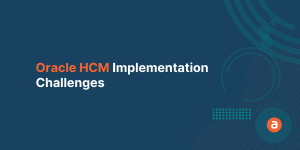Digital transformation helps businesses increase efficiency, solve challenges, overcome pain points, and create superior customer experiences. Companies are empowered to do more with data, engage customers more effectively, and make their workforce more efficient.
However, implementing the tools necessary to thrive in the constantly evolving technology landscape can be challenging for many companies. Additionally, outlining a broad digital strategy for today, tomorrow, and beyond can confound leadership teams that are not used to the swift pace of innovation.
Companies leverage the latest digital innovations and tools to achieve increased insights, agility, and efficiency from their respective digital transformation journeys. The future of business is technology-driven, and companies need to keep up with the latest trends to compete with others in terms of efficiency, productivity, and customer service. For some companies, shifting to a more digital way of doing things can be difficult.
Here are the most common digital transformation challenges companies face when making the switch:
- Change Resistance
- Focusing Only on the Tool
- Management Buy-In
- Culture Mindset Shift
- Lack of Vision
1. Change Resistance
{% video_player “embed_player” overrideable=False, type=’hsvideo2′, hide_playlist=True, viral_sharing=False, embed_button=False, autoplay=False, hidden_controls=False, loop=False, muted=False, full_width=False, width=’1920′, height=’1080′, player_id=’71509080236′, style=” %}
Source: TED
The era we live in is “always under transformation,” and people naturally resist change, especially when imposed on them. The problem is that business leaders wait too long to act, resulting in workforce frustration, hampers the digital shift.
The biggest and most common challenge is a lack of consideration for the human side of change. Companies want people to adopt new behaviors, but many leaders lack the knowledge to help them step up. Companies believe that new tech is a boon that everyone will automatically want (“if we build it, they will come”), but it’s one of the great myths of change.
The solution is to make digital transformation empowering and energizing by putting people first. It sounds simple, but how many leaders truly communicate early, often, and clearly during change? It’s a rare skill. A people-first approach helps make benefits clear – for the workforce, the customers, and the community. Getting good at digital is in everyone’s best interests. Leaders must make that connection clear.
2. Focusing Only on the Tool
{% video_player “embed_player” overrideable=False, type=’hsvideo2′, hide_playlist=True, viral_sharing=False, embed_button=False, autoplay=False, hidden_controls=False, loop=False, muted=False, full_width=False, width=’1920′, height=’1080′, player_id=’71508757398′, style=” %}
Source: Publicis Sapient
The most widespread misunderstanding among business owners is that digital transformation is only achievable if a company’s tools and technologies are upgraded. Digital transformation is much more than “adding more technology” to the organization. A lack of transformation roadmap and business-IT alignment dooms a digital transformation project.
Before adding new technology to the mix, a full lay of the land needs to be mapped out. At the same time, leaders must define the transformation goals and how they will achieve them.
Companies can follow the SPEED framework to create a successful transformation roadmap,
S- Strategy to understand business capabilities and priorities
P- Building a digital Product that constantly evolves
E- Effective Engineering to make the technology dream possible
E- Create a compelling Experience for both employees and customers
D- Understanding the Data surrounding the entire ecosystem
You can get digital transformation insights from top influencers to help you overcome digital transformation challenges and ensure seamless adoption of new technologies that companies bring in.
3. Management Buy-In
{% video_player “embed_player” overrideable=False, type=’hsvideo2′, hide_playlist=True, viral_sharing=False, embed_button=False, autoplay=False, hidden_controls=False, loop=False, muted=False, full_width=False, width=’1920′, height=’1080′, player_id=’71508757380′, style=” %}
Source: Eric Kimberling
Companies are under a lot of pressure from the market to offer software products to their customers faster. As a result, they tend to emphasize the tools and operational end states that promise performance gains rather than the value that those performance improvements will provide to their customers and the company. This tendency can aggravate digital transformation issues by causing rapid organizational structures and business operations changes.
Leaders must identify how the technology will help them better meet customer needs and outpace their competitors. Taking the time to define how technology fits into a company’s overall strategy will eliminate scope creep, improve technology selection, and keep budgets in check.
There needs to be buy-in from the entire organization, especially those who will use and maintain the new technology. Leaving organizational change management out of the program is a considerable deterrent to successful implementation. As part of the program, affected teams should identify inefficient business processes and work with the implementation team to make them more efficient.
4. Culture Mindset Shift
{% video_player “embed_player” overrideable=False, type=’hsvideo2′, hide_playlist=True, viral_sharing=False, embed_button=False, autoplay=False, hidden_controls=False, loop=False, muted=False, full_width=False, width=’1920′, height=’1080′, player_id=’71509080332′, style=” %}
Source: CBS Mornings
Digital transformation is not only about software updates. It’s about changing the way you work and adopting a digital-first attitude while keeping the human experience in mind.
The most significant barriers to digital success are cultural and behavioral. Even if you have a solid digital transformation strategy in place, regulating organization-wide change while taking into account different behaviors and mindsets. Failing to explain the importance of digital transformation across the organization may result in employee resistance to change.
Employees typically oppose change until they are informed of the true impact that the change will have on their work lives. Educate employees about the benefits of the change to promote a change-accepting culture at your organization.
Create a workforce transition plan for your digital transformation initiative to overcome cultural hurdles. This plan should inform employees about the digital transformation approach, major changes that will come with it, goals, and timeline.
5. Lack of Vision
{% video_player “embed_player” overrideable=False, type=’hsvideo2′, hide_playlist=True, viral_sharing=False, embed_button=False, autoplay=False, hidden_controls=False, loop=False, muted=False, full_width=False, width=’1920′, height=’1080′, player_id=’71507627615′, style=” %}
Source: Simon Sinek
Many firms struggle to achieve digital transformation with a lack of clarity of thought. Top C-level executives are apprehensive about embracing digital transformation since it demands a huge number of tasks. Moreover, some of them aren’t always able to lay out a solid digital transformation definition to their staff.
For instance, this was greatly apparent in 2020 when many businesses quickly struggled to adjust to a remote business model. Because of this, many employees are not on the same page, and it always ends up resulting in poor work efficiency and performance. Moreover, not all leaders can understand the clear picture themselves when it comes to digital transformation.
Digital transformation will bring about a slew of technical issues, and you will need the proper people to tackle them. It requires expertise and advanced technology skills, and due to more companies pursuing this, there is a deficit in the number of skilled professionals. Train your employees to be digitally literate and assist them in developing the necessary skills for innovation.
These are the top 5 Enterprise Digital Transformation challenges. Companies can overcome most of the digital transformation challenges with the help of a Digital Adoption Platform (DAP).
With a DAP tool like Apty, you can ensure effective remote team onboarding and training with the help of in-app walkthroughs, tooltips, and data validation. You can also boost employee engagement and improve the software adoption rates of your entire tech stack.













